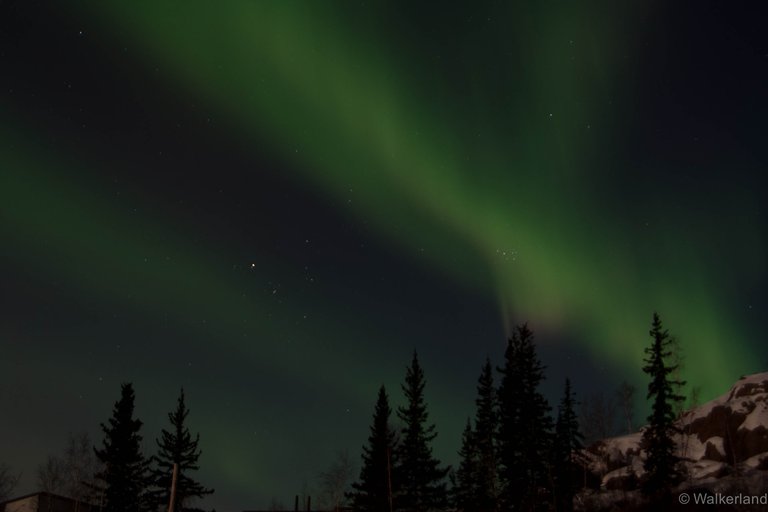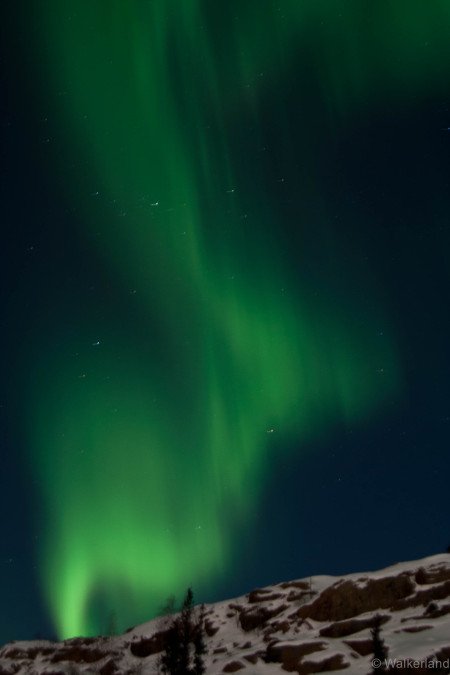I often think that the night is more alive and more richly coloured than the day ~ Van Gogh
The Aurora Borealis is an unbelievably beautiful light show. It is caused by the collisions between electrically charged particles released from the sun entering the earth’s atmosphere and colliding with gases such as oxygen and nitrogen.
The most spectacular shows are often in the coldest months. Photographing them is not hard once you know the basics.
Japanese tourists often travel to the Northern most parts of Canada in the winter time to partake in aurora gazing, it is one of the major tourist attractions in Yellowknife, the capital of the Northwest Territories. There are a lot of legends and mythology about the Aurora which you can read about here.
A few notes about shooting in cold climates

In Yellowknife where I lived, It's cold in the winter -30c (or colder) typically. Your camera can handle cold weather, but you do need to warm it up from time to time. You should also carry spare batteries, the cold can drain them quickly.
Here are a few tips for capturing the Aurora Borealis

- A wide angle or fish eye lens is best for photographing night skies. In my photos I was not able to capture as impressive a scene as I wanted because I didn't have a wide angle lens.
- A tripod is essential for night photography. Your camera MUST be steady.
- No flash is needed.
- Shoot in Manual mode. You will need to find the infinity setting on your lens and make sure the lens is switched to manual. From there you will have to take some test shots and make small adjustments until you are happy with the focus.
- For your camera, you will also want to shoot in manual mode. You'll need to do test shots and make adjustments until you are happy. The range you'll want to start in: ISO around 800, your aperture between f/2.8 and f/5.6, and your shutter speed at between 15 seconds and 20 seconds.
- If you don't know how the settings on your camera work, it's a good idea to watch videos and tutorials. They will help and there are many on-line for free.
- You'll want to find a good source for finding out what's going on up in the sky. Here is the source that I used: Astronomy North Solar storms usually provide a good show so watch for notices about them.
- The best shots are taken outside of the city limits. Find a good spot in advance that you can travel to it and quickly set up when the time it right.
- Set aside plenty of time. Sometimes you wait twenty minutes and sometimes a few hours for the big show to start. It's always worth the wait.
One last thing, some touch ups in software like darktable can really help, a touch of sharpening can really make the aurora pop and a very light hand with luminance can help bring out some colours.
Always remember to take time away from your camera to watch the show. It's a beautiful experience when no technology is present.
Read more stories like this @walkerland

i like this photography
Wow
This post has received a 1.66 % upvote from @boomerang thanks to: @walkerland